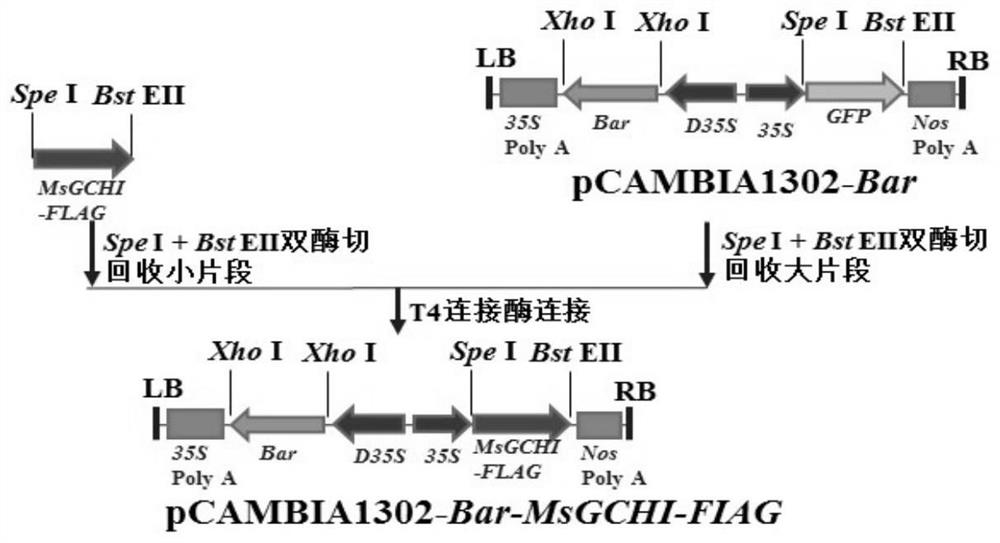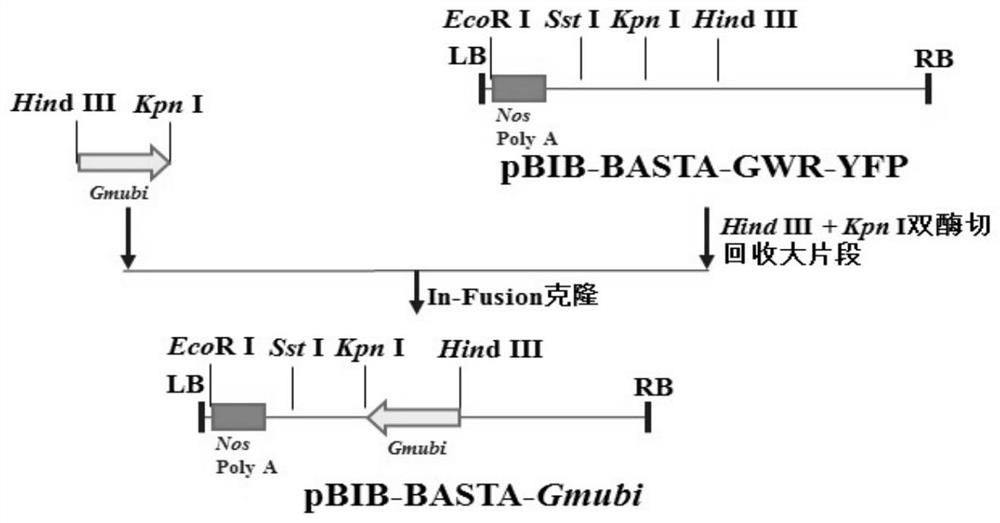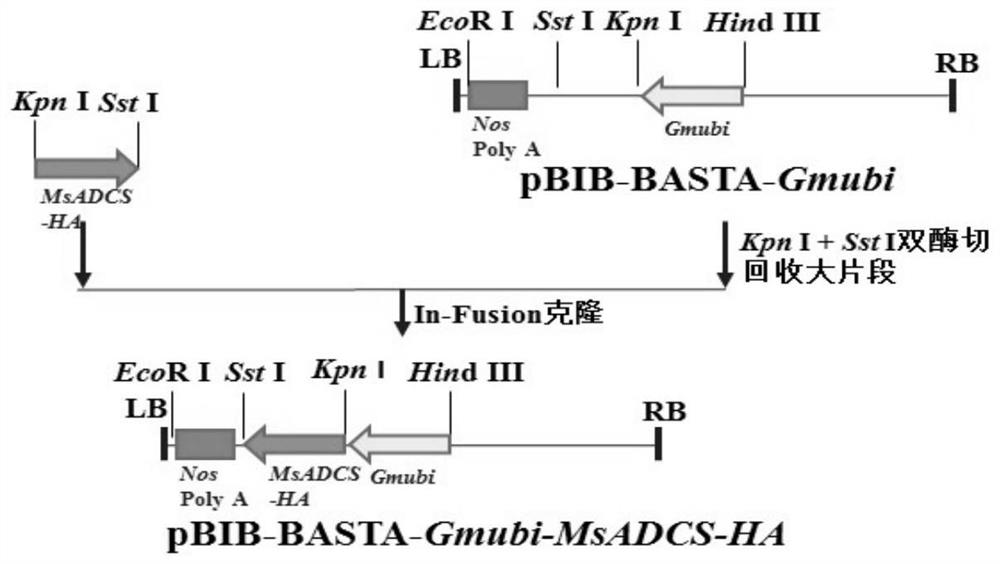Application of genes MsGCHI and MsADCS in increasing folic acid content of plants and promoting plant growth
A technology that promotes plant growth and genes, applied in the biological field, can solve problems such as vitamin B12 deficiency symptoms, environmental pollution, side effects, etc., and achieve the effects of promoting plant growth, increasing plant folic acid content, and promoting growth
- Summary
- Abstract
- Description
- Claims
- Application Information
AI Technical Summary
Problems solved by technology
Method used
Image
Examples
Embodiment 1
[0044] Example 1. Synthesis of the full sequence of genes MsGCHI and MsADCS
[0045] 1. Primer Design for Vector Construction
[0046] Table 1 Vector construction primer design
[0047]
[0048]
[0049] Primer 5.0 was used to design specific primers for MsGCHI, MsADCS and Bar genes and Gmubi promoter, and Spe I (P1), Bst EII (P2) and Xho I (P5) were introduced into the 5' and 3' ends of the corresponding sequences, respectively. With Xho I (P6), Hind III (P7) and Kpn I (P8) restriction sites and protection bases (Table 1); in addition, add a FLAG tag sequence (CATTACAAGGATGACGACGATAAG) to the 5' end of the downstream primer of MsGCHI gene, in An HA tag sequence (TACCCATACGATGTTCCAGATTACGCT) was added to the 5' end of the downstream primer of the MsADCS gene.
[0050] Using pMD19-T-GCHI and pMD19-T-ADCS plasmids as templates, and P1, P2, P3, and P4 as specific primers, the amplification of MsGCHI-FLAG fusion gene and MsADCS-HA fusion gene was carried out; using pCAMBIA...
Embodiment 2
[0134] Example 2. Effects of genes MsGCHI and MsADCS on improving plant folic acid content
[0135]The five overexpressed transgenic L. japonicus lines screened in Example 1 were named GA-2, GA-3, GA-5, GA-10 and GA-11, respectively, and were transplanted into flowers containing sterile vermiculite. In pots, water the culture with 1 / 2 Hoagland nutrient solution. And the transgenic lines GA-3, GA-11 and wild-type L. japonicus plants were propagated asexually by the cutting method, watered once every 2 days, and transplanted to a sterile vermiculite plant after the cuttings took root. In the flowerpot, water and cultivate with 1 / 2 Hoagland nutrient solution, the temperature in the plant culture room is 24±2℃, and the light is 16h·d -1 , The relative humidity is about 65%.
[0136] 1. Determination of folic acid and its components
[0137] 1.1 Standard preparation
[0138] Weigh 0.01 g of the standard with an analytical balance and take 100 mL of Na 2 CO 3 The solution (0.1...
PUM
 Login to View More
Login to View More Abstract
Description
Claims
Application Information
 Login to View More
Login to View More - R&D
- Intellectual Property
- Life Sciences
- Materials
- Tech Scout
- Unparalleled Data Quality
- Higher Quality Content
- 60% Fewer Hallucinations
Browse by: Latest US Patents, China's latest patents, Technical Efficacy Thesaurus, Application Domain, Technology Topic, Popular Technical Reports.
© 2025 PatSnap. All rights reserved.Legal|Privacy policy|Modern Slavery Act Transparency Statement|Sitemap|About US| Contact US: help@patsnap.com



